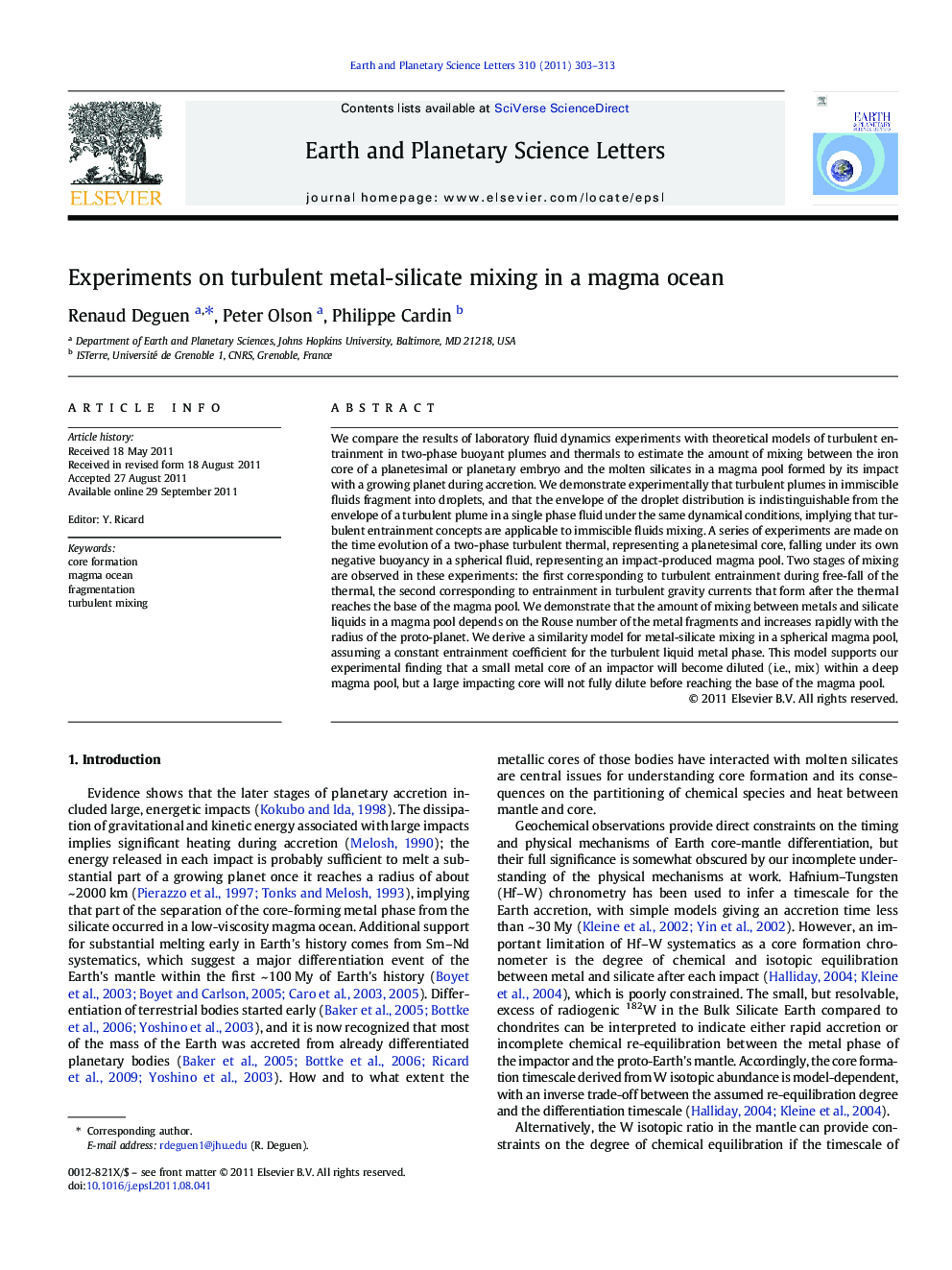| Article ID | Journal | Published Year | Pages | File Type |
|---|---|---|---|---|
| 4677742 | Earth and Planetary Science Letters | 2011 | 11 Pages |
We compare the results of laboratory fluid dynamics experiments with theoretical models of turbulent entrainment in two-phase buoyant plumes and thermals to estimate the amount of mixing between the iron core of a planetesimal or planetary embryo and the molten silicates in a magma pool formed by its impact with a growing planet during accretion. We demonstrate experimentally that turbulent plumes in immiscible fluids fragment into droplets, and that the envelope of the droplet distribution is indistinguishable from the envelope of a turbulent plume in a single phase fluid under the same dynamical conditions, implying that turbulent entrainment concepts are applicable to immiscible fluids mixing. A series of experiments are made on the time evolution of a two-phase turbulent thermal, representing a planetesimal core, falling under its own negative buoyancy in a spherical fluid, representing an impact-produced magma pool. Two stages of mixing are observed in these experiments: the first corresponding to turbulent entrainment during free-fall of the thermal, the second corresponding to entrainment in turbulent gravity currents that form after the thermal reaches the base of the magma pool. We demonstrate that the amount of mixing between metals and silicate liquids in a magma pool depends on the Rouse number of the metal fragments and increases rapidly with the radius of the proto-planet. We derive a similarity model for metal-silicate mixing in a spherical magma pool, assuming a constant entrainment coefficient for the turbulent liquid metal phase. This model supports our experimental finding that a small metal core of an impactor will become diluted (i.e., mix) within a deep magma pool, but a large impacting core will not fully dilute before reaching the base of the magma pool.
► Fragmentation of an impactor metallic core in a magma ocean. ► Order of magnitude analysis and experiments imply turbulent metal/silicate mixing. ► Similarity model for turbulent mixing at large Weber and Reynolds numbers. ► Experiments predict significant large scale mixing when fragmentation is efficient.
